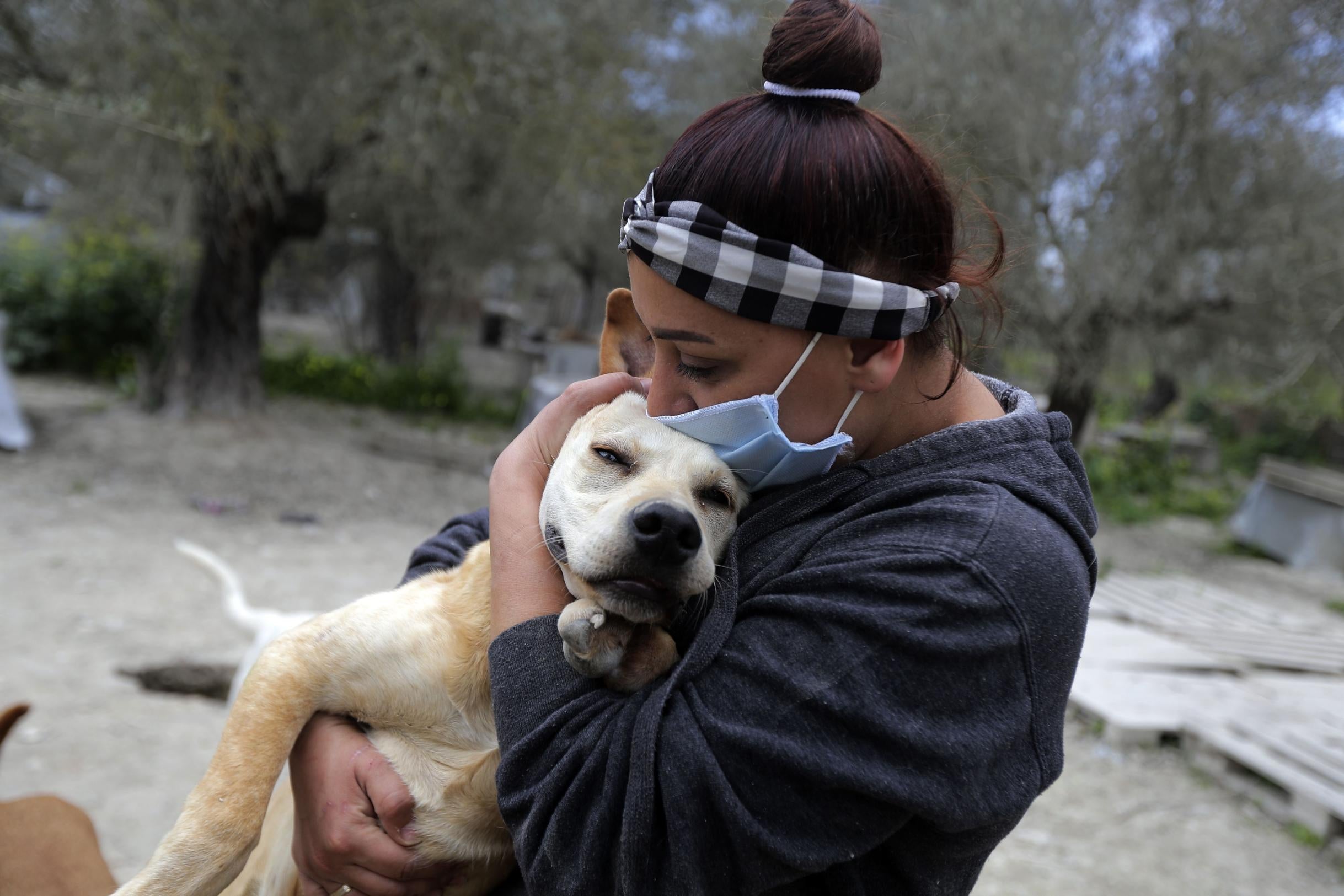Pets and fireworks: how to keep your animals calm and safe on July 4
(CNN) — Fireworks explode like magnified gunfire in the exquisitely sensitive ears of many of our pets.
Measuring between 150 and 175 decibels, fireworks are louder than gunfire (140 decibels) and even many planes at takeoff (120 decibels). Decibels measures the loudness of a sound while hertz measures the frequency of a sound.
Human ears are damaged at a mere 85 decibels. Yet we can hear to only about 20,000 hertz, while dogs can hear between 45,000 and 65,000 hertz. Just think of the physical and emotional damage that might occur to a dog left outside to face the noise.
Due to COVID-19, animal advocates say this year has been extremely bad for pets with noise phobias. Instead of going people to central locations to watch a huge, orchestrated display, they have been buying fireworks in record numbers, setting them off in the streets next to homes for weeks.
That’s expected to explode Saturday, as people use their stash to celebrate the Fourth of July. When frightened, dogs bolt and owners may lose their best friends in the night.
“Dogs have been known to dig under or jump over fences, break tethers or even shatter windows in response to their fireworks fears,” said Temma Martin, the public relations manager for the Best Friends Animal Society, one of the nation’s oldest no-kill agencies.
In addition, she said in a statement, “some animal control agencies have their officers working on an ’emergencies-only’ basis, which means that they only pick up stray animals who are sick, injured or already contained.”
That leaves dogs running loose, to possibly be struck by cars, picked up by strangers, even turned into local animal shelters, many of which are still closed. Anxious pet owners won’t likelybe able to visit in person to identify and rescue their pet.
Prevention is key
Statistics show at least 40% of dogs have noise phobias, which can include fear of thunderstorms, leaf blowers, power drills, even hair dryers. But those noises are relatively constant, experts say, while fireworks are frighteningly sporadic and therefore unexpected.
“It’s hard not to feel helpless when you see them shaking and panting and so obviously distressed,” said Dr. John Howe, president of the American Veterinary Medical Association, in a statement.
And it’s not just dogs. Cats and many other domestic (and wild) animals have sensitive hearing, provided by nature to find and hunt prey.
Prepare your pet before dark
The key to helping your pet survive this onslaught, experts say, is being prepared.
“With a little advance planning and preparation you can ease your pets’ anxiety and help get them through this time,” Howe said.
Tags and microchips. Be sure your pet has a well-fitting collar with current identification tags. If your pet has a microchip, make sure your correct contact info is recorded with the vet clinic or shelter that implanted the chip.
That way, if your pet does escape into the night, you will be able to immediately call and alert the vet or shelter about their absence.
Exercise before dark. A tired dog is a calmer dog. A happy cat is a more relaxed cat. Fit in some extra playtime for your cats, and take dogs out for play and exercise earlier in the day. Such activities burn off extra energy, thus limiting anxiety later when it’s time to sleep.
Bring all pets indoors. Don’t leave your pet outside to suffer alone. Put a dog’s crate or bed in the quietest, most enclosed room possible, and see if they like being covered with a blanket.
Cats like to go high to feel secure, so give them a covered cozy cave that is elevated off the ground, like a hut on an indoor cat tree or in a closet.
Distract your pet. Provide lots of new toys and long-lasting chews and treats. Food puzzles may also keep them distracted from the unnerving noises.
Use calming aids. Many pets respond to “thunder” shirts or blankets that wrap them in a heavy, calming cocoon. Cats and dogs often enjoy smelling species-specific pheromones. Cats can wear collars with scents that mimic the pheromone mother cats produce to calm their kittens. Dogs respond to the scent of lactating female dogs, called appropriately “dog appeasing pheromone,” or DAP.
Use calming sounds. First, muffle sounds by closing curtains and doors near your pet. Calming music, white noise or television can be used to provide comfortable, familiar sounds.
“Some experts even suggest playing a war movie to blend the sound from the TV with the sounds from outside,” Martin said.
Use medication as a last resort. While there’s nothing wrong with turning to your vet for calming medications, experts worry that pet owners might rely on that first, without doing the behavior modification tips above. But if you’ve tried all these ideas and your furry friend is still in a panic, reach out to your vet for advice.
The-CNN-Wire™ & © 2020 Cable News Network, Inc., a WarnerMedia Company. All rights reserved.
